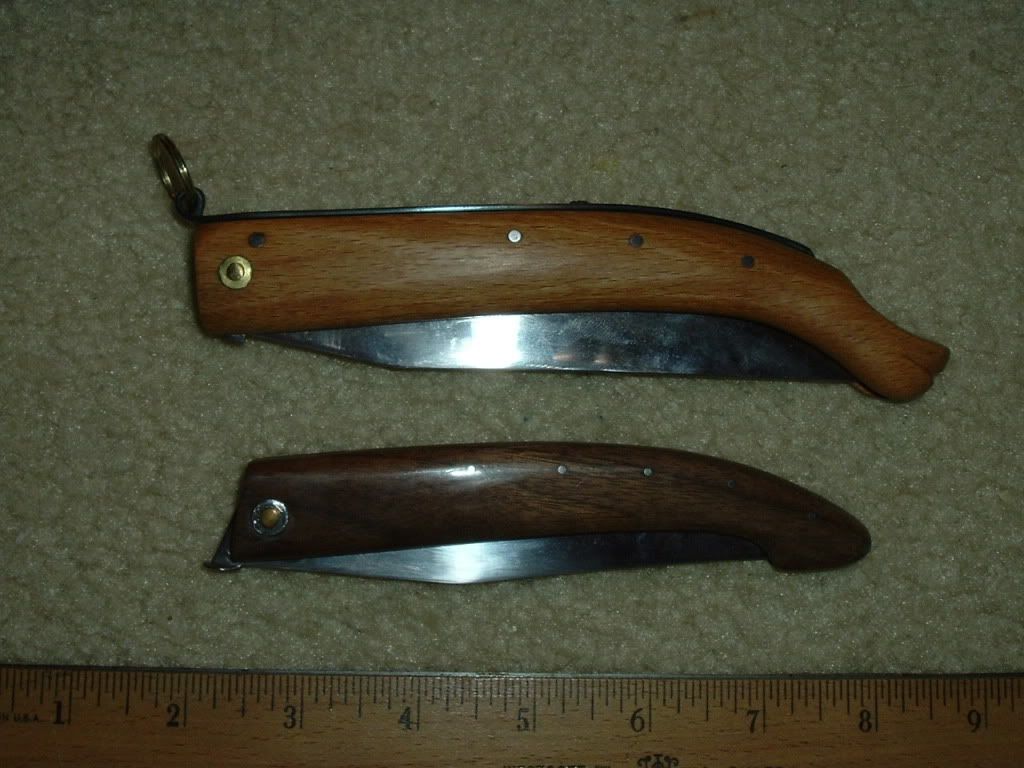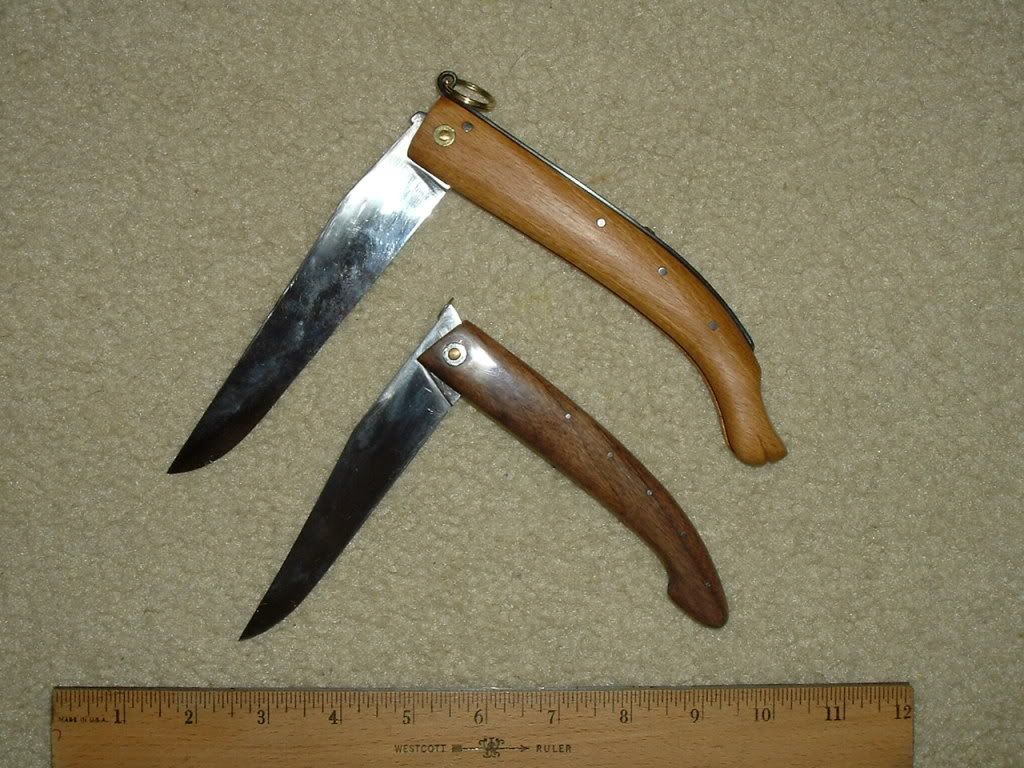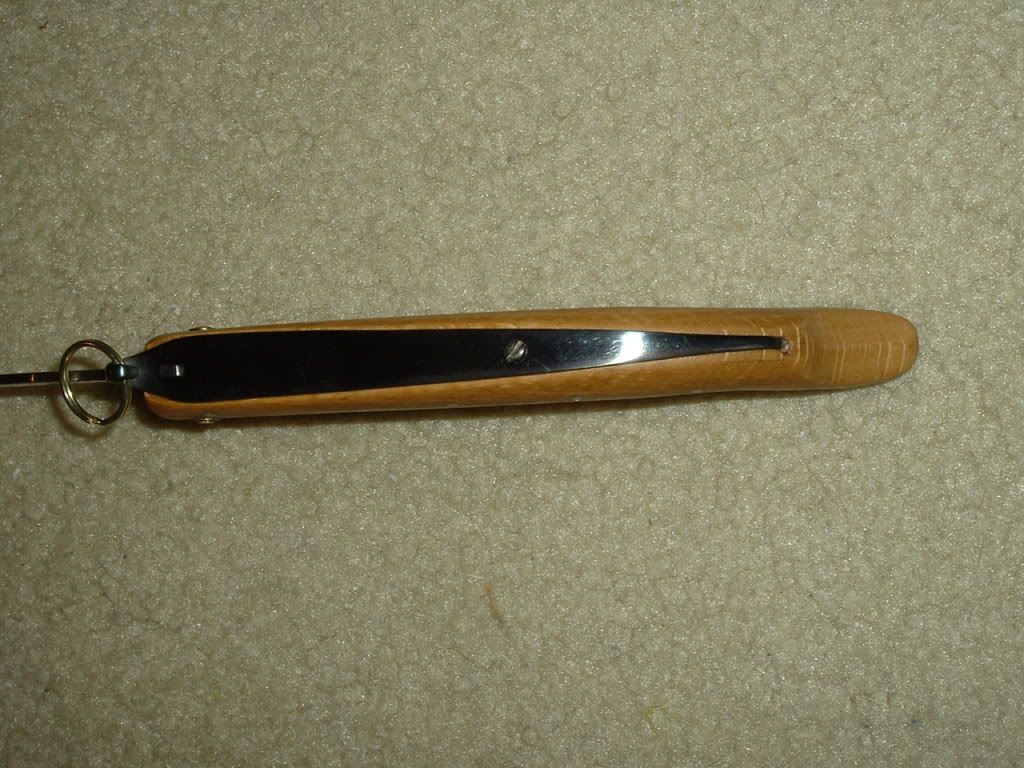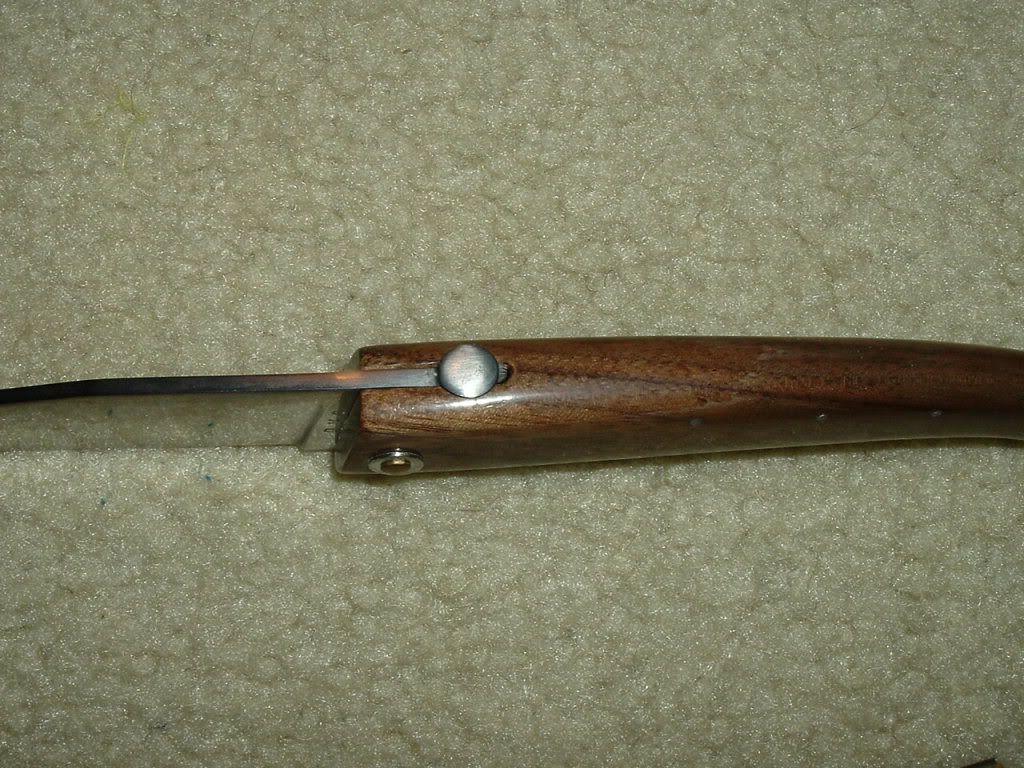Joe Yanta Really nice knife BUT MAN WHAT A LOT OF WORK! Still, a really hulk -a- hunk of knife.
I wanted to copy the one Sean mentioned in the fur trade cutlery sketch book. I started with a section of auto/truck leaf spring, hack sawing and filing. I never finished that spring although it is about half done and I am saving it for a future project. I next bought a machete at Harbor Freight tools for $3.00 and cut out a bar of it (cut off wheel/power hand drill) for the spring, the thickness is about 3/32" I annealed the cut out section, then saw/filed to shape-not too hard to do, then bent the spring to the shape of the wood handle, then curled the front part. I found that over bending the spring a little ( say 1/8" at midpoint on the handle) helps exert more pressure on the blade's tang once the spring is attached to the handle. Drilled a squared the hole for the tooth on the top of the tang. The spring has a 90 degree bent prong in the rear and a hole about 2/3rds of the way back for a small screw. The screw holds the spring to the handle. The combination of the screw and prong prevent sideways twist.
On the knife itself- I used the two pin set up, the second pin stopping the blade. Like you said such a knife is just a plain friction folder, all the spring does is lock the blade. Okay, so I have a two pin friction folder- I now had the blade in the open position and held the spring on top, I set the spring a little back so the knife would NOT lock. I held it with tape and drilled holes for the screw and prong and then put the spring on the handle.
What followed was a series of file and test fittings. I would remove the spring and use a square needle file the remove just a bit off the front of the spring's hole, until the blade would just snap into position. That way I got a wobble-free. locked blade.
The handle is wood, curved, and tapers towards the tip. The blade is thinner, 5" long, more pointed at the tip. I tempered the spring by going to cherry red and quenching, then polishing and re-heating to a bright blue and then quench. Other folks get better results by melting pure lead (use rifle balls if nothing else can be found)- about 700 degrees and then tempering in that. My spring is a bright blue. I'll try to post a photo if I can figure out how.
BYW- nice stamp mark, and once again- really nice knife.
I wanted to copy the one Sean mentioned in the fur trade cutlery sketch book. I started with a section of auto/truck leaf spring, hack sawing and filing. I never finished that spring although it is about half done and I am saving it for a future project. I next bought a machete at Harbor Freight tools for $3.00 and cut out a bar of it (cut off wheel/power hand drill) for the spring, the thickness is about 3/32" I annealed the cut out section, then saw/filed to shape-not too hard to do, then bent the spring to the shape of the wood handle, then curled the front part. I found that over bending the spring a little ( say 1/8" at midpoint on the handle) helps exert more pressure on the blade's tang once the spring is attached to the handle. Drilled a squared the hole for the tooth on the top of the tang. The spring has a 90 degree bent prong in the rear and a hole about 2/3rds of the way back for a small screw. The screw holds the spring to the handle. The combination of the screw and prong prevent sideways twist.
On the knife itself- I used the two pin set up, the second pin stopping the blade. Like you said such a knife is just a plain friction folder, all the spring does is lock the blade. Okay, so I have a two pin friction folder- I now had the blade in the open position and held the spring on top, I set the spring a little back so the knife would NOT lock. I held it with tape and drilled holes for the screw and prong and then put the spring on the handle.
What followed was a series of file and test fittings. I would remove the spring and use a square needle file the remove just a bit off the front of the spring's hole, until the blade would just snap into position. That way I got a wobble-free. locked blade.
The handle is wood, curved, and tapers towards the tip. The blade is thinner, 5" long, more pointed at the tip. I tempered the spring by going to cherry red and quenching, then polishing and re-heating to a bright blue and then quench. Other folks get better results by melting pure lead (use rifle balls if nothing else can be found)- about 700 degrees and then tempering in that. My spring is a bright blue. I'll try to post a photo if I can figure out how.
BYW- nice stamp mark, and once again- really nice knife.









